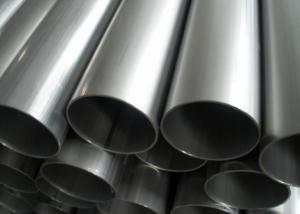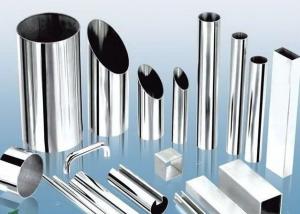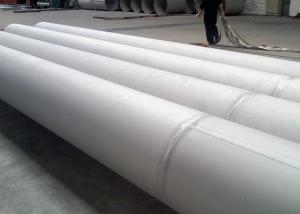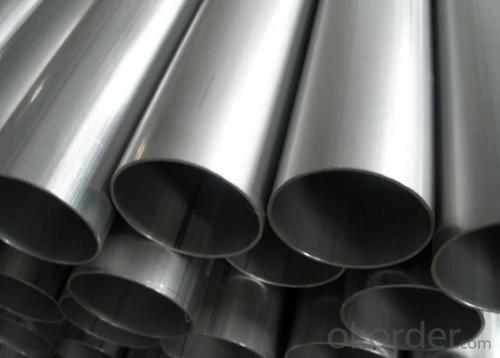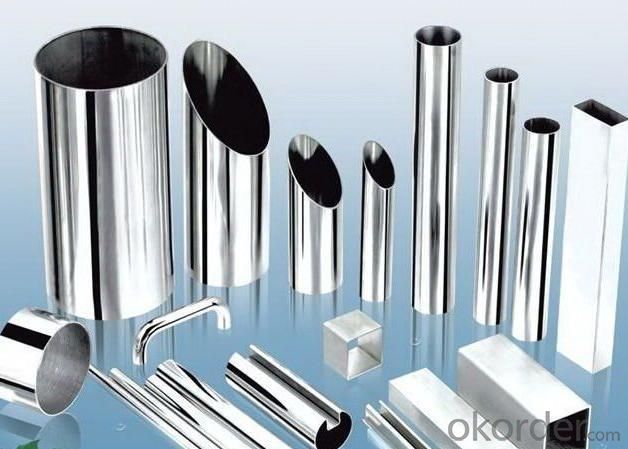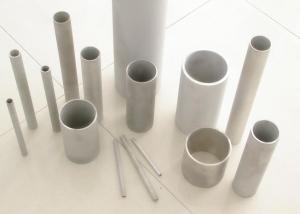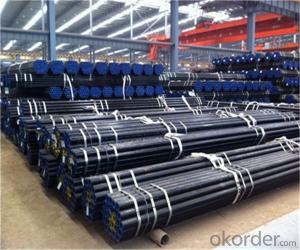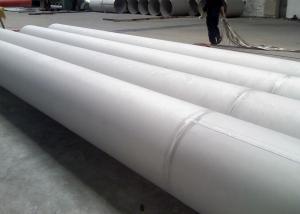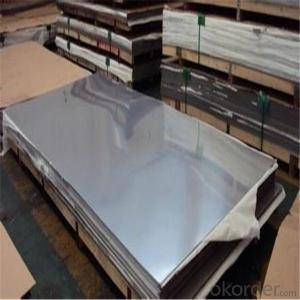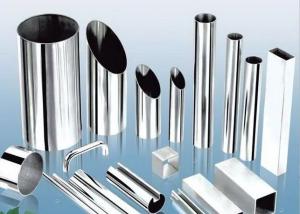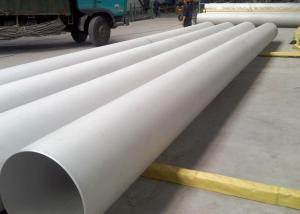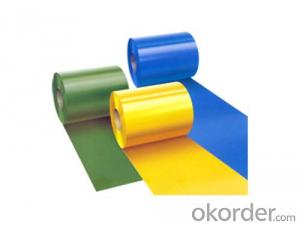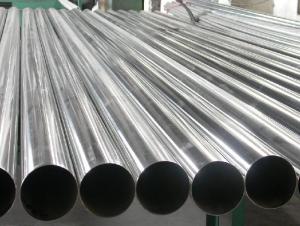904L Stainless Steel Welded Pipe
- Loading Port:
- China Main Port
- Payment Terms:
- TT or LC
- Min Order Qty:
- 5 Tons m.t.
- Supply Capability:
- 2000 Tons m.t./month
OKorder Service Pledge
OKorder Financial Service
You Might Also Like
Stainless Steel Welded Pipe
APPLICATION:
Industrial Fluid Conveying
Boiler,Heat Exchanger and condenser
Sanitary and Thin-wall water pipe
Oil and Gas transportation etc.
Standards :
ASTM A249/A269/A270/A312/A358/A788/A789/A790
DIN/EN 10217/DIN 11850
JIS G3459,GB/T 12771 etc.
SIZES:
|
OUTSIDE DIAMETER |
OD |
WALL THICKNESS | |||
|
SCH 5S |
SCH 10S |
SCH 40S | |||
|
N.B |
NPS |
mm |
mm |
mm |
mm |
|
8 |
1/4' |
13.72 |
- |
- |
2.24 |
|
10 |
3/8' |
17.15 |
- |
- |
2.31 |
|
15 |
1/2' |
21.34 |
1.65 |
2.11 |
2.77 |
|
20 |
3/4' |
26.67 |
1.65 |
2.11 |
2.87 |
|
25 |
1' |
33.4 |
1.65 |
2.77 |
3.38 |
|
32 |
1-1/4' |
42.16 |
1.65 |
2.77 |
3.56 |
|
40 |
1-1/2' |
48.26 |
1.65 |
2.77 |
3.68 |
|
50 |
2' |
60.33 |
1.65 |
2.77 |
3.91 |
|
65 |
2-1/2' |
73.03 |
2.11 |
3.05 |
5.16 |
|
80 |
3' |
88.9 |
2.11 |
3.05 |
5.49 |
|
90 |
3-1/2' |
101.6 |
2.11 |
3.05 |
5.74 |
|
100 |
4' |
114.3 |
2.11 |
3.05 |
6.02 |
|
125 |
5' |
141.3 |
2.77 |
3.4 |
6.55 |
|
150 |
6' |
168.28 |
2.77 |
3.4 |
7.11 |
|
200 |
8' |
219.08 |
2.77 |
3.76 |
8.18 |
|
250 |
10' |
273.05 |
3.4 |
4.19 |
9.27 |
|
300 |
12' |
323.85 |
3.96 |
4.57 |
9.52 |
|
350 |
14' |
355.6 |
3.96 |
4.78 |
11.13 |
|
400 |
16' |
406.4 |
4.19 |
4.78 |
12.7 |
|
450 |
18' |
457.2 |
4.19 |
4.78 |
14.27 |
|
500 |
20' |
508 |
4.78 |
5.54 |
15.09 |
|
550 |
22' |
558.8 |
4.78 |
5.54 |
15.09 |
|
600 |
24' |
609.6 |
5.54 |
6.35 |
17.48 |
|
650 |
26' |
660.4 |
5.54 |
7.92 |
17.48 |
|
700 |
28' |
711.2 |
5.54 |
7.92 |
17.48 |
|
750 |
30' |
762 |
6.35 |
7.92 |
17.48 |
|
800 |
32' |
812.8 |
- |
7.9 |
17.48 |
|
850 |
34 |
863.6 |
- |
7.92 |
17.48 |
|
900 |
36' |
914.4 |
- |
7.92 |
19.05 |
|
1000 |
40' |
1016 |
- |
9.53 |
- |
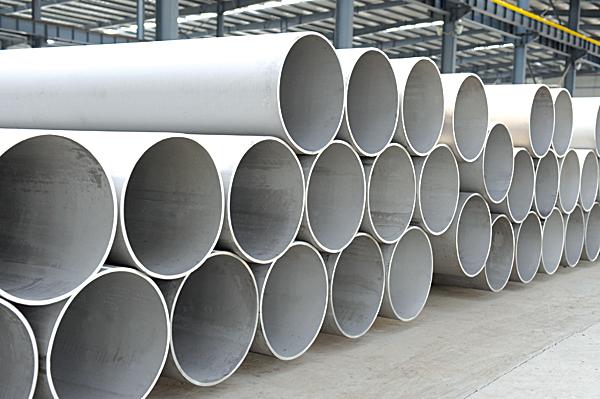
- Q: Can stainless steel sheets be used for outdoor sculptures?
- Indeed, outdoor sculptures can make use of stainless steel sheets. Due to its remarkable resistance to corrosion, stainless steel is exceptionally suitable for outdoor scenarios where sculptures are subjected to diverse weather conditions. It can endure rain, snow, heat, and UV radiation without compromising its strength or deteriorating. Moreover, stainless steel boasts a sleek and contemporary appearance that can augment the sculpture's visual impact. Its robustness and ability to repel rust render it a favored selection for outdoor sculptures found in parks, gardens, and public areas.
- Q: What are the common sizes of stainless steel sheets?
- Common sizes of stainless steel sheets vary depending on the industry and application. However, there are some standard sizes that are readily available in the market. For instance, stainless steel sheets commonly come in thicknesses ranging from 0.4mm to 3.0mm. The most common widths are 1000mm, 1219mm, and 1500mm, while the most common lengths are 2000mm, 2438mm, and 3000mm. These dimensions are often referred to as 4x8 (4 feet by 8 feet), as they are the standard size for stainless steel sheets used in various construction and fabrication projects. It's worth noting that stainless steel sheets can also be custom-cut to specific dimensions based on the requirements of a particular project. This allows for greater flexibility and ensures that the sheets fit perfectly for the intended application.
- Q: Are stainless steel sheets non-magnetic?
- Stainless steel sheets are not inherently non-magnetic, contrary to popular belief. Although there are varieties of stainless steel, like austenitic grades such as 304 and 316, that are non-magnetic, there are many other types that can possess magnetic properties. It is worth noting that ferritic and martensitic stainless steels, in particular, tend to exhibit magnetism. The presence or absence of magnetism in stainless steel is determined by its composition and crystal structure. Therefore, if your requirement is specifically for non-magnetic stainless steel sheets, it is advisable to choose the austenitic grades.
- Q: 304 stainless steel plate price ups and downs affected by what factors?
- First of all, the stainless steel ingredients, that is, stainless steel raw materials. Stainless steel is a kind of high alloy steel can resist corrosion in air or chemical corrosive medium. His representative steel 13 steel 1Cr17 (430) and 18- Ocr18Ni9 chromium nickel, stainless steel is the main raw material of iron, chromium, nickel, Cr NI, the price of raw materials has decisive effect on the price of stainless steel to the rising prices of raw materials, to support the formation of stainless steel prices, anti pressure, or become power. So we need to pay attention to the stainless steel market, we must pay close attention to the global price of nickel, especially LME nickel price trend, but also on the global iron ore, molybdenum price trend and the latest developments, and other non-ferrous metal prices.
- Q: What do stainless steel 304 industrial surfaces refer to?
- The industrial surface is the ordinary pickling surface, which is treated by the last pickling process. Is the kind of white surface that you see at ordinary times. The bright surface of life is the surface of which is further polished or annealed.
- Q: Are stainless steel sheets suitable for chemical processing plants?
- Yes, stainless steel sheets are highly suitable for chemical processing plants. Stainless steel is known for its excellent corrosion resistance, making it ideal for handling various chemicals and corrosive substances commonly found in chemical processing plants. Additionally, stainless steel sheets are also durable, hygienic, and easy to clean, making them a reliable choice for maintaining a clean and safe working environment in such facilities.
- Q: What are the benefits of using patterned stainless steel sheets in interior design?
- There are numerous advantages to utilizing patterned stainless steel sheets in interior design. To begin, these sheets bring a distinct and contemporary aesthetic to any area. The patterns etched onto the stainless steel come in a variety of designs, ranging from geometric shapes to intricate motifs, adding a touch of elegance and visual interest to walls, ceilings, or furniture. This can enhance the overall ambiance of a room and make it truly stand out. Additionally, patterned stainless steel sheets are incredibly durable and long-lasting. Stainless steel is well-known for its strength and resistance to corrosion, making it an ideal material for interior design applications. These sheets can withstand daily wear and tear, making them suitable for high-traffic areas such as restaurants, hotels, or public spaces. Furthermore, patterned stainless steel sheets require minimal maintenance. Unlike other materials, stainless steel is easy to clean and does not require special care or regular maintenance. A simple wipe with a damp cloth or the use of mild cleaning agents is sufficient to keep the sheets looking pristine. This makes them a practical choice for interior design, especially in areas where hygiene is crucial. Moreover, patterned stainless steel sheets offer design versatility. They can be used in various applications, including wall cladding, room dividers, backsplashes, or even as decorative accents. With a wide range of patterns and finishes available, designers have the freedom to create unique and customized looks to suit any style or theme. Lastly, incorporating patterned stainless steel sheets into interior design is environmentally friendly. Stainless steel is a recyclable material, meaning it can be reused or repurposed without causing harm to the environment. By incorporating sustainable materials into interior design, we contribute to reducing waste and promoting eco-conscious practices. In conclusion, the use of patterned stainless steel sheets in interior design provides benefits such as aesthetic appeal, durability, low maintenance requirements, versatility, and environmental friendliness. These sheets offer a practical and visually pleasing solution to elevate the design of any space.
- Q: Are stainless steel sheets resistant to hydrogen embrittlement?
- Yes, stainless steel sheets are generally resistant to hydrogen embrittlement due to their high strength and low reactivity with hydrogen gas.
- Q: Are stainless steel sheets scratch-resistant?
- Yes, stainless steel sheets are generally scratch-resistant. Stainless steel is known for its durability and resistance to scratches, making it an ideal material for various applications, including kitchen appliances, countertops, and decorative purposes. However, it is important to note that while stainless steel is highly resistant to scratches, it is not completely scratch-proof. Sharp objects or abrasive materials can still cause scratches or scuff marks on the surface of stainless steel sheets, especially with excessive force or repeated contact. Regular maintenance and proper care can help minimize the appearance of scratches and keep stainless steel sheets looking their best.
- Q: Are stainless steel sheets easy to clean?
- Yes, stainless steel sheets are easy to clean. They have a smooth surface that is resistant to stains and can be easily wiped clean with soap and water. Additionally, they are also resistant to rust and corrosion, making them low-maintenance and suitable for various applications.
1. Manufacturer Overview
| Location | Anhui,China |
| Year Established | 2003 |
| Annual Output Value | Above US$16 Million |
| Main Markets | South Korea;Japan; Europe;ASEAN;India |
| Company Certifications | ISO 9001:2000; |
2. Manufacturer Certificates
| a) Certification Name | |
| Range | |
| Reference | |
| Validity Period |
3. Manufacturer Capability
| a) Trade Capacity | |
| Nearest Port | Shanghai |
| Export Percentage | 70% |
| No.of Employees in Trade Department | 160 People |
| Language Spoken: | English;Chinese;Japanese;Korea |
| b) Factory Information | |
| Factory Size: | Above 300,000 square meters |
| No. of Production Lines | Above 10 |
| Contract Manufacturing | OEM Service Offered;Design Service Offered |
| Product Price Range | Average |
Send your message to us
904L Stainless Steel Welded Pipe
- Loading Port:
- China Main Port
- Payment Terms:
- TT or LC
- Min Order Qty:
- 5 Tons m.t.
- Supply Capability:
- 2000 Tons m.t./month
OKorder Service Pledge
OKorder Financial Service
Similar products
Hot products
Hot Searches
Related keywords
